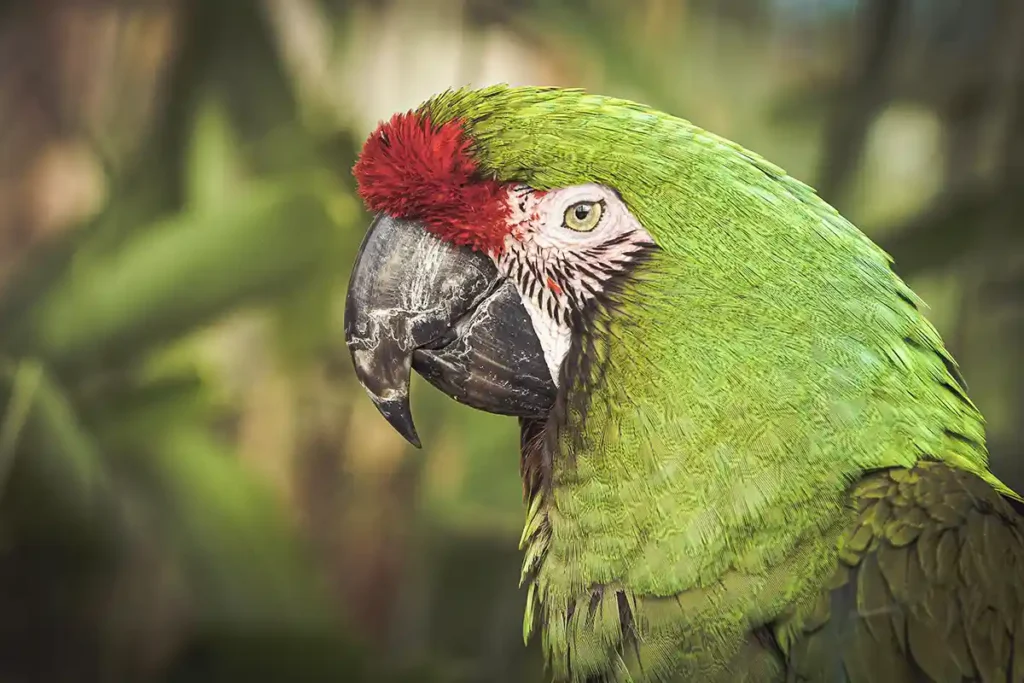
The world of military macaws, a captivating species of parrot native to Central and South America, is alive with brilliant colors, invigorating sounds, and remarkable creatures. These birds have feathers in predominantly green hues that strongly resemble the uniform seen on military personnel when they are marching in parade formation, making them stand out even more vividly against their wild habitat. Here we will explore the physical characteristics associated with this specific type of macaw as well as its natural environment, social customs like communication habits among themselves or humans if kept as pets.
Also conservation efforts related to keeping these animals safe from extinction. We’ll cover how best care for your pet Military Macaw should be applied such housing requirements & dietary needs while at home plus activities needed to keep fit, active & healthy lifestyle indoors/outdoors. Lastly, tips shared on responsible adoption purchasing process so you can become part owner of one of the most enthralling types macrocosm’s avian inhabitants.
Short Summary
- Military macaws have a colorful plumage and can live up to 54 years in captivity, making them an ideal pet.
- DNA testing or surgical sexing is recommended for accurately determining the gender of military macaws.
- Caring for military macaws requires providing proper housing, regular cleaning, social interaction, mental stimulation and financial resources.
Physical Traits and Lifespan of Military Macaws
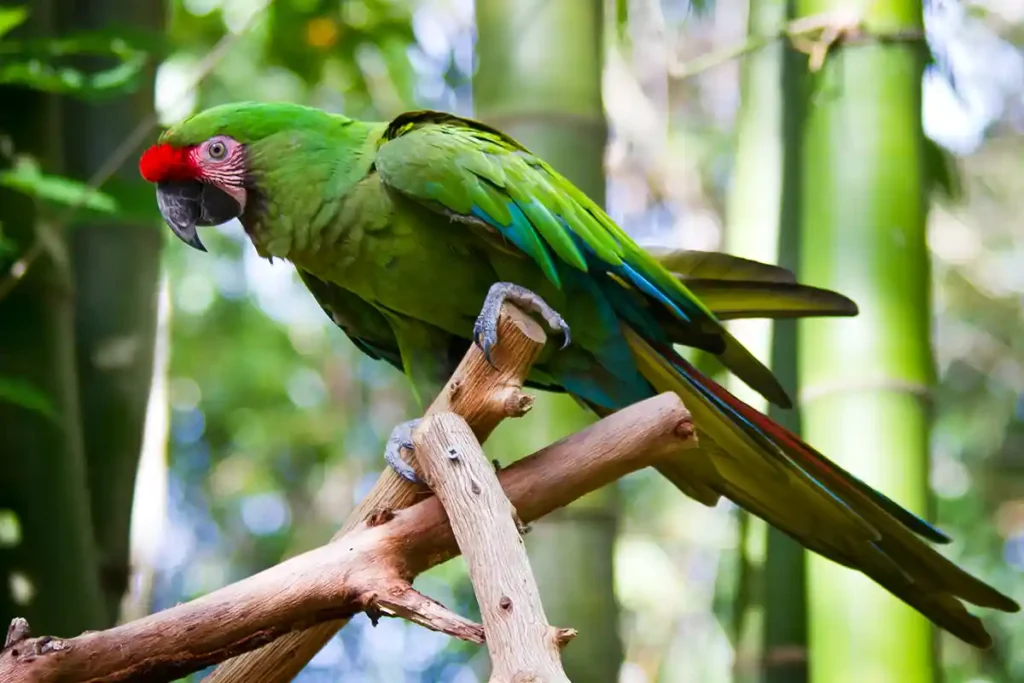
Military macaws, known as Ara militaris and native to Central and South America, are characterized by their predominantly green feathers contrasted with a red forehead patch along with black beaks and yellow eyes. They possess an impressive wingspan of 99-110 cm when measured alongside a body length ranging from 70-80 cm while weighing in at 900 grams.
These birds have been popular among owners due to their longevity. They can live up to 54 years, which provides them the opportunity for companionship over several decades making them rewarding pets for those who choose these beautiful Macaws!
Colors and Markings
Military macaws, or Ara militaris, come in two subspecies: the Mexican military macaw and its Bolivian counterpart. While both of these species feature stunning green feathers, there are certain colour variations that can be noticed between them.
Interestingly enough, males and females look almost identical, meaning a DNA test is necessary to properly distinguish gender for sure when keeping Macaws as pets.
Gender Identification
Due to the monomorphic physical features of military macaws, it is not possible to determine their gender through simple external examination. To ensure owners are providing an optimal environment and care for these birds based on their particular needs, DNA testing or surgical sexing should be conducted in order to accurately identify a macaw’s gender. Both methods guarantee that bird keepers have all relevant information at hand so they can properly take care of their pet Macaws.
Natural Habitat and Distribution
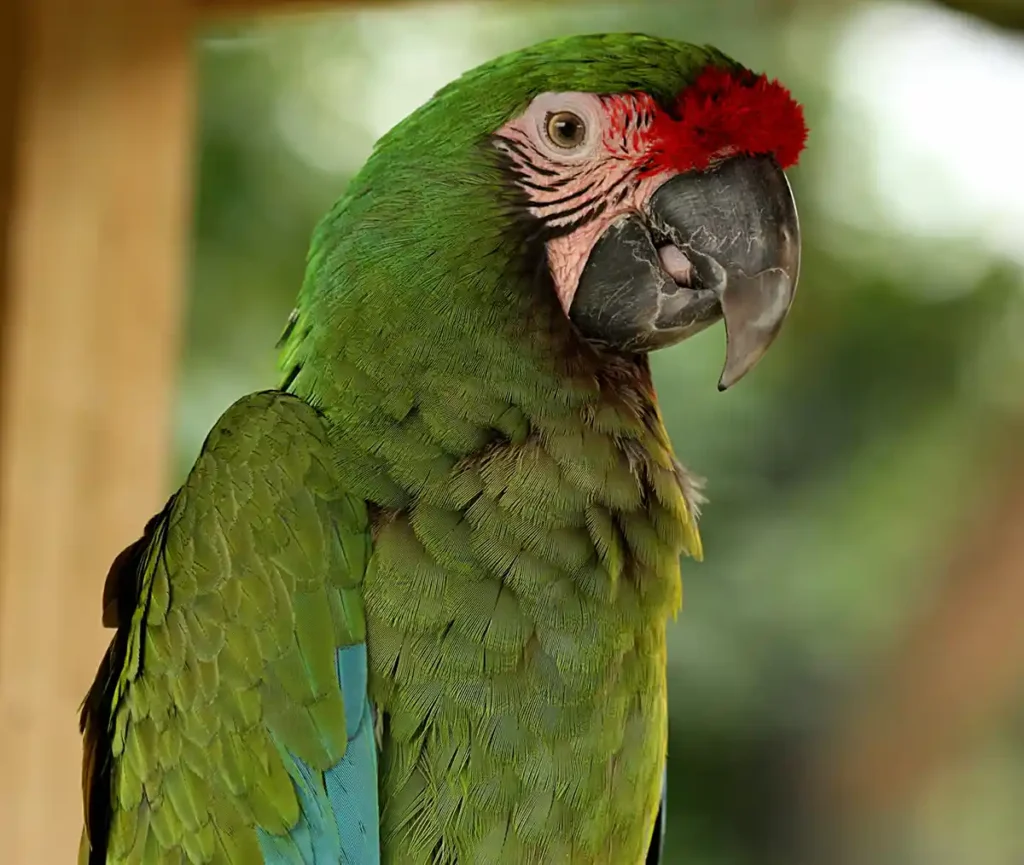
Military macaws can typically be seen in a variety of habitats across Central and South America, from Mexico all the way to Argentina. These birds take shelter amid tall trees and cliff faces where they build their nests. Often found roaming tropical forests or shaded coffee plantations looking for food sources. Unfortunately, due to habitat destruction caused by humans along with pressures put on them through the pet trade industry, military macaws are classified as vulnerable species in nature.
Subspecies
The two varieties of military macaws, the Mexican and Bolivian subspecies, have exclusive zones which do not overlap. The range for the Mexican breed stretches across Mexico to some Central American countries while its counterpart is found in Bolivia as well as portions of Brazil.
Knowing each type’s respective area helps conservation efforts by enabling strategies that are specific to protecting these birds’ habitats along with their unique needs.
Social Behavior and Bonding
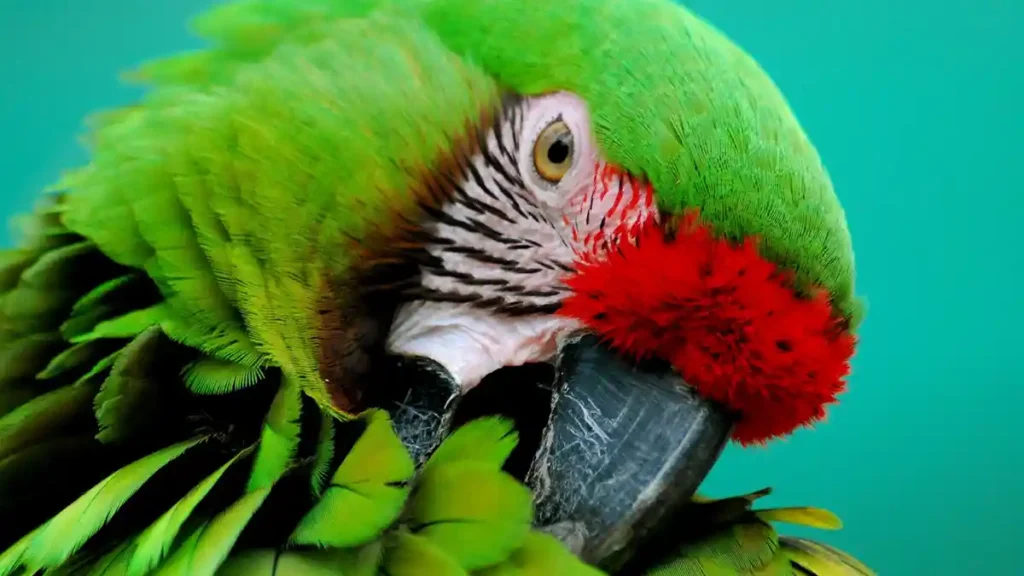
Military macaws are known for their pleasant personality, being very easy to tame and sociable in nature. It is important that they be properly socialized so they can remain welcoming around different people or genders. In the wild, groups of these birds usually number up to a hundred members, including parents with their offspring until it grows mature enough on its own, showcasing how close knit this species really is. Typically, this is not the case. There are roughly 50 macaws per group roaming together, which attests to the strong family unit present among them in their natural habitat.
Communication and Vocal Abilities
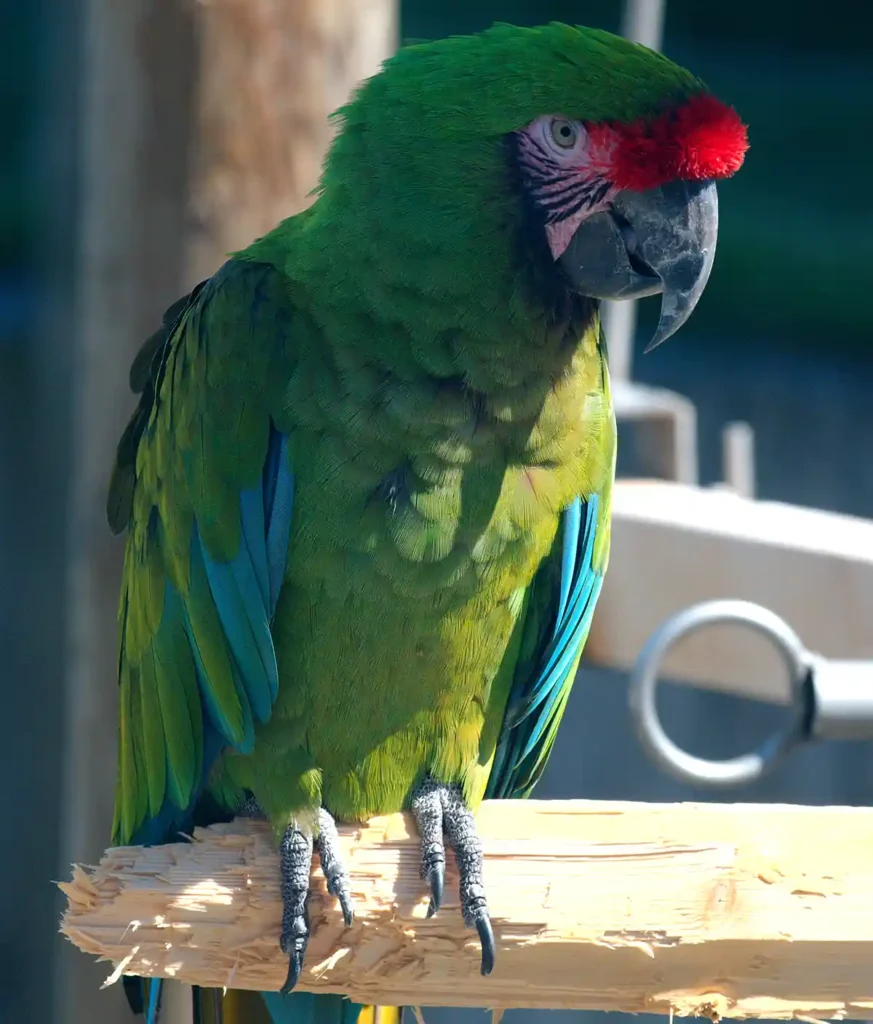
Macaws of the military species display an amazing ability to pick up vocalizations. They even can replicate sounds from their immediate environment and be trained, though they lack the ability to do so. With other parrot varieties when it comes to talking. These birds usually remain quite calm, but can become annoyingly loud whenever they desire, which disqualifies them as a good choice for apartment or condominium living.
Their raucous calls used mainly for defending nesting sites are often heard far away due to the level of noise these macaws create.
Caring for Military Macaws as Pets
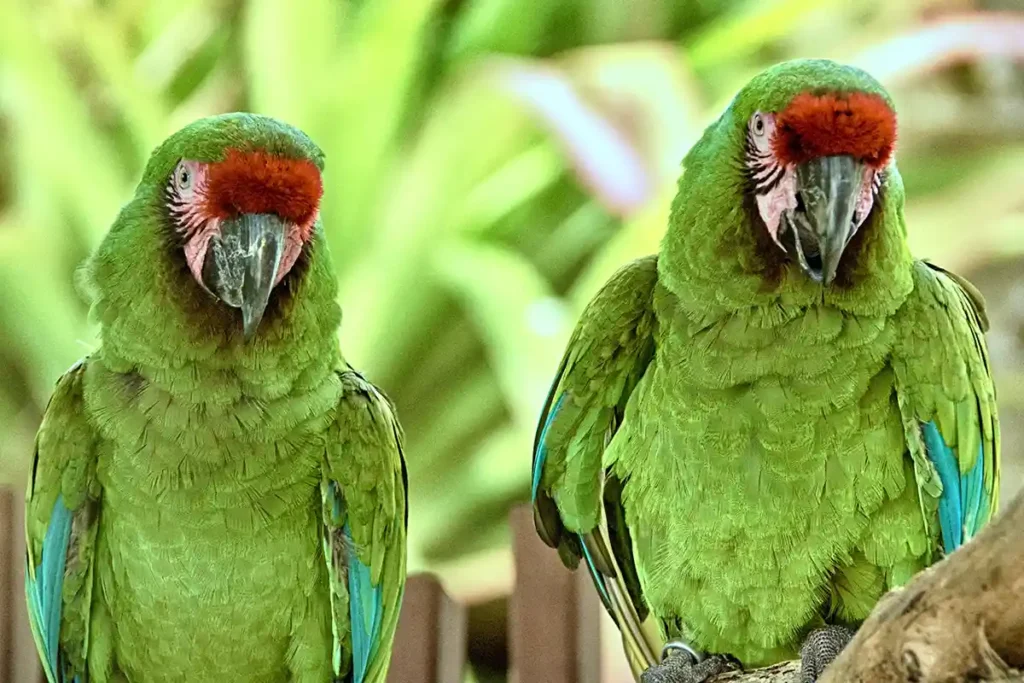
Caring for military macaws as pets calls for commitment in providing adequate housing, frequent cleaning sessions, socialization and mental stimulation. Financial resources are also necessary to make sure these long-lived birds can enjoy a healthy life while living in captivity. In this article, we will examine the particular needs regarding accommodation and brain activities that should be met when keeping macaws at home.
Housing Requirements
The birds known as military macaws require a spacious cage measuring 36x48x60 inches in order to live happily and healthily in captivity. This space should be located by itself inside the home, with stimulating objects such as perches, toys and bird-friendly materials provided for them to explore and keep their energy up. Giving fresh branches for chewing is important too since this would give these same macaws that they naturally do when out there wild!
Mental Stimulation and Enrichment
The wellbeing of military macaws requires mental enrichment and stimulation. Activities such as training, petting, cuddling, potty teaching or teaching tricks are important to maintain a strong connection between the bird and its human companion while also stimulating their minds. It is essential that these birds have access to toys which motivate them for natural behaviors like exploring, climbing or perching. Along with ample socializing opportunities in order for proper exercise habits and balanced nutrition including fresh fruits and vegetables included in their diet regimen too. Such activities help ensure good physical condition as well mental clarity of the macaw species being discussed here.
Health Concerns and Prevention
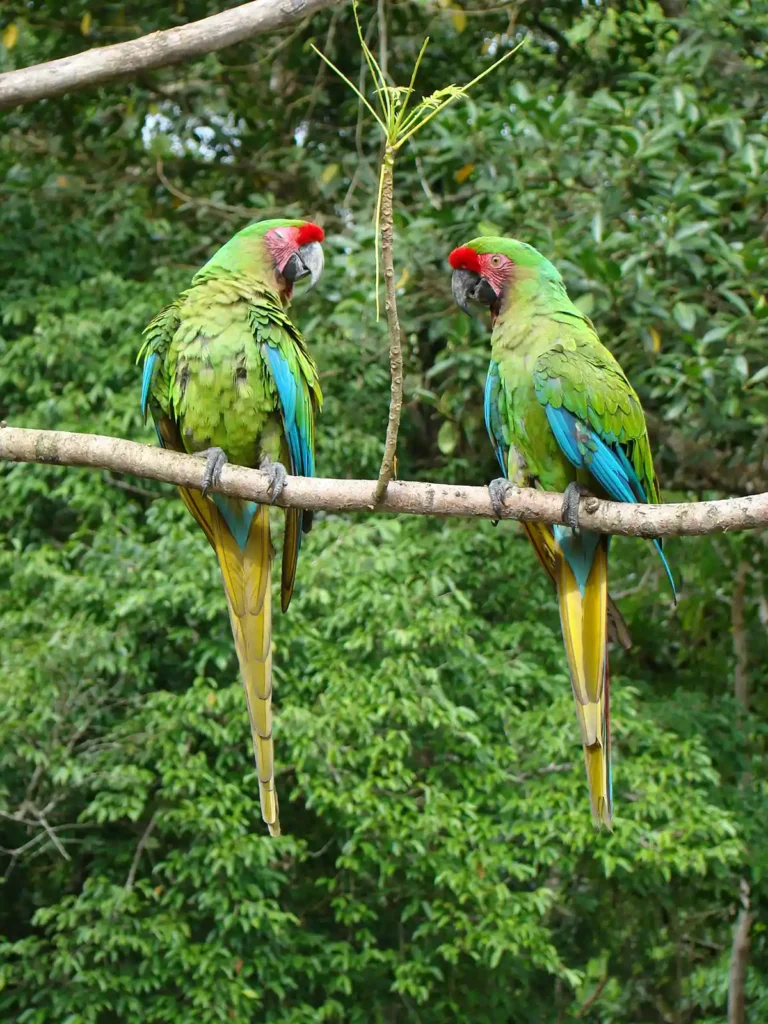
Military macaws can have a variety of health issues, such as Macaw Wasting Syndrome, which is caused by nutrition deficiency and stress mixed with parasites. An inadequate diet or improper beak trimming may lead to overgrown beaks in these birds. Finally, self-mutilation due to boredom or anxiety (such as plucking feathers or biting its own skin) are potential symptoms found in military macaws that owners need to look out for.
To make sure your pet parrot has the best chances of good health and contentment, there should be precautions taken. Offering balanced meals along with proper grooming and adequate mental stimulation will guarantee that your bird lives well into their years! In summary, keeping up on caring for military macaws means watching out not only for physical ailments but emotional ones too so they stay healthy all around!
Feeding and Nutrition
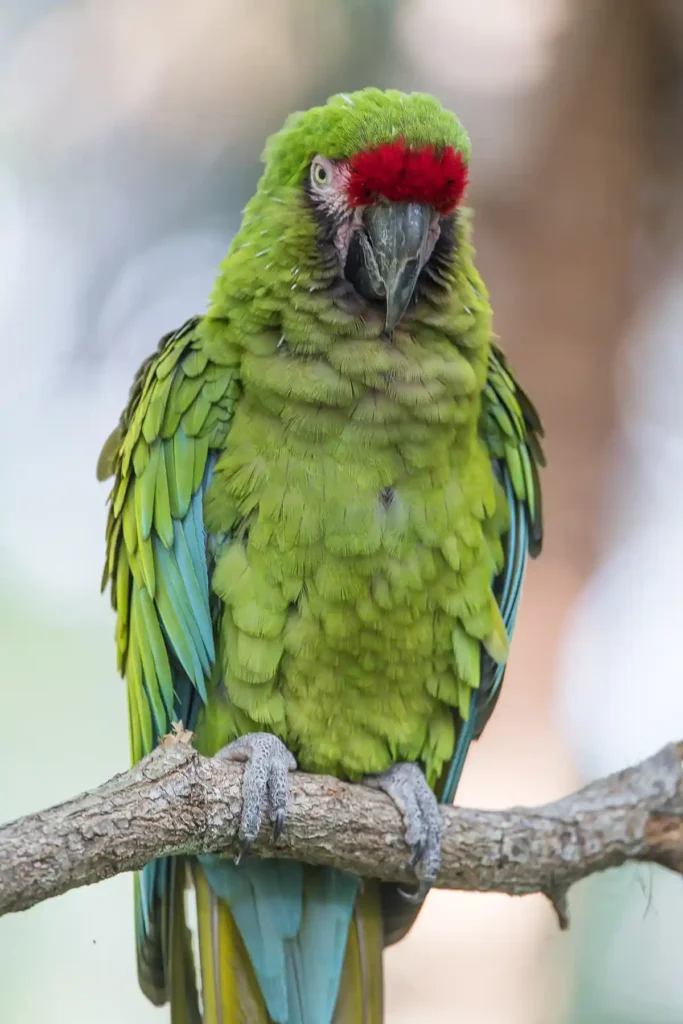
Military macaws inhabit the wild and thrive on a diet of seeds, nuts, berries, fruits and other plant matter. In captivity, it is important to provide them with all their dietary requirements by offering variety in terms of seed mixes combined with fresh fruit and vegetables, but avoiding certain items such as chocolate or avocado which can be toxic for birds. The quantity should usually range from 1/2 – 3/4 cup each per day depending on size. Larger-sized macaw may require more food every day.
Wild Diet
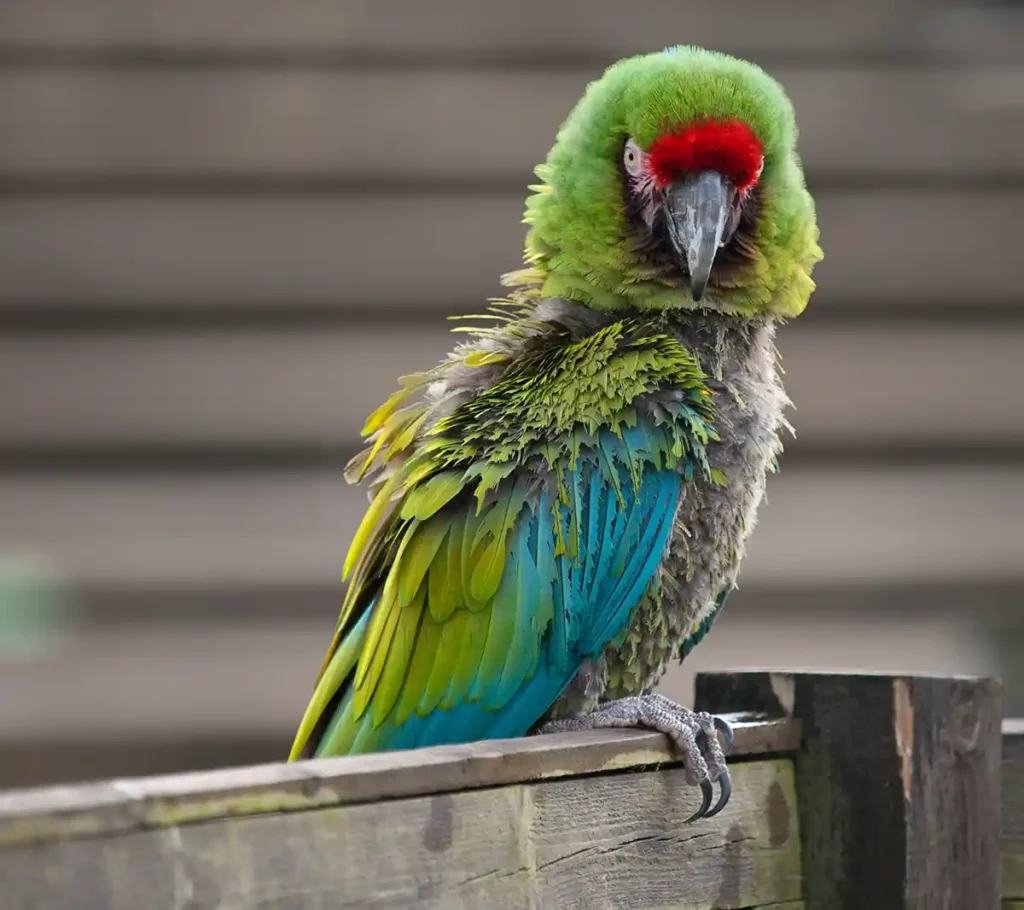
Military macaws have evolved to inhabit semi-deciduous forests, and their diet in the wild consists of various species including Arbol del diablo (Hura polyandra) and Maya nut (Brosimum alicastrum). They feed mainly on seeds, berries, nuts, fruits, and vegetables. Knowing what these birds typically consume in nature can aid pet owners who want to give them a balanced nutritional intake that is more natural.
Captive Diet
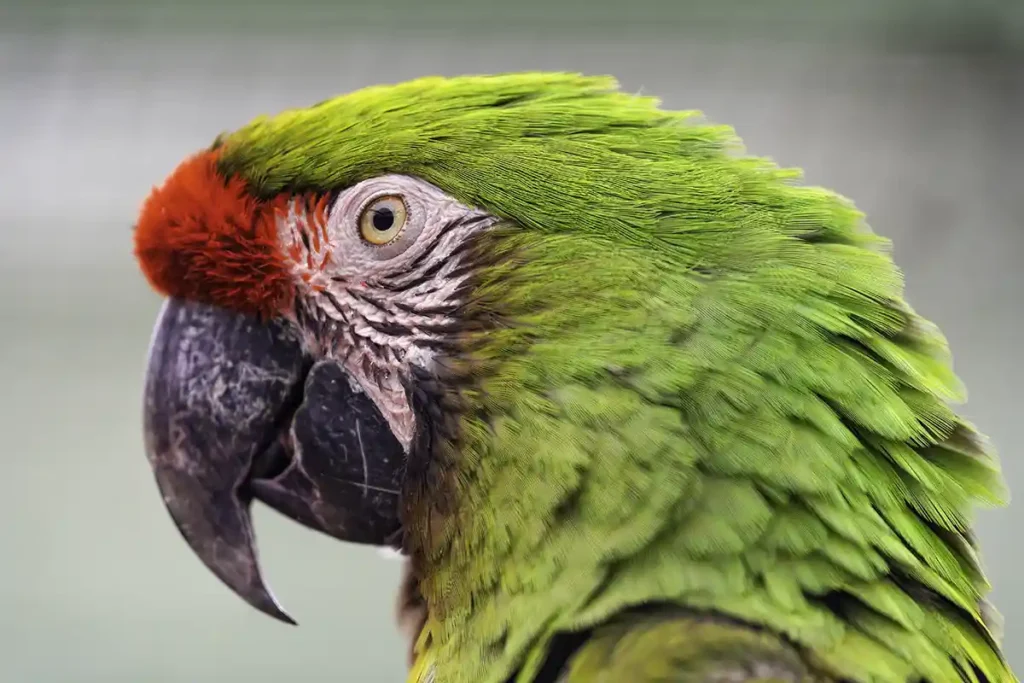
Providing a wide selection of foods is critical for military macaws kept in captivity to stay healthy. Seeds, fresh fruits and vegetables should be given as they provide the necessary vitamins and minerals needed while simultaneously providing different flavors or consistencies that keep their interest when eating. It’s essential for guaranteeing that macaws acquire all the vital nutrients they need.
Exercise and Playtime

Look after a military macaw properly by making sure they get enough physical activity and playtime. They need two to four hours out of their cage every day for exercise in order to stay physically fit and mentally healthy. To keep them occupied, provide bird-safe toys like wood, swings, ropes link chains or bells instead of letting the birds turn to potentially damaging behaviours such as screeching and plucking feathers or chewing items around the house.
Breeding and Reproduction
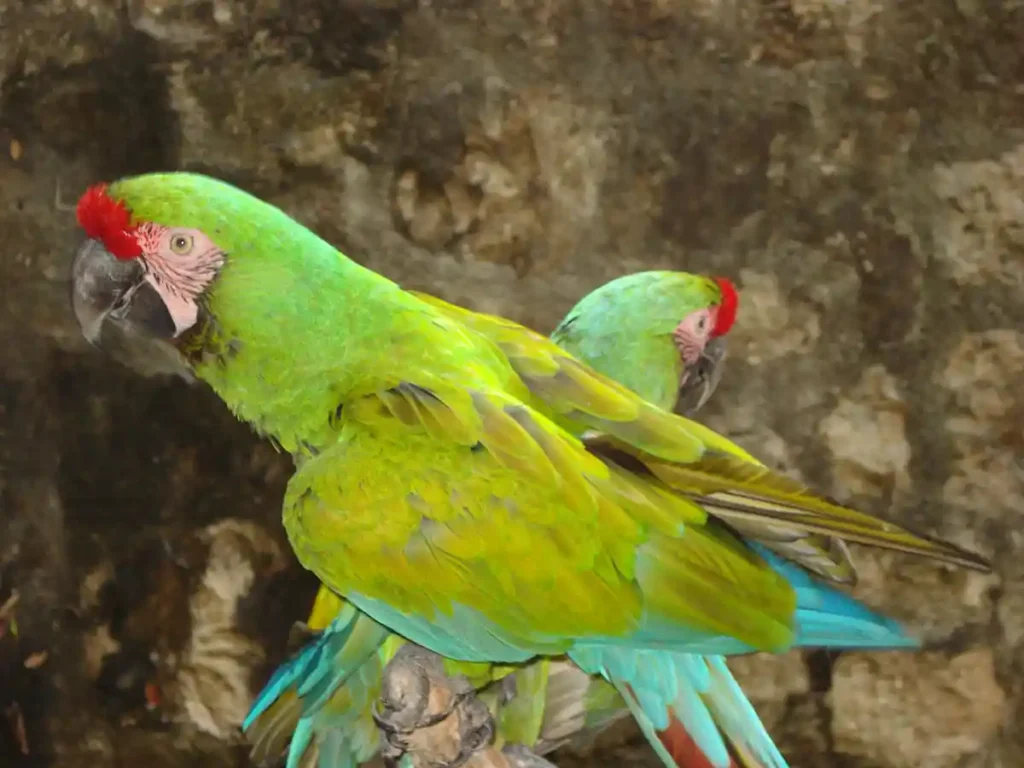
Military macaw pairs, which mate for life and take part in aerial displays during courtship rituals, inhabit protected areas such as tree cavities or cliff faces to form their nests. During this period of nesting, the female takes on an incubatory role while her partner brings sustenance back to the nest. After hatching, chicks are dependent on their parents for food and safety until they can exist independently.
This provides a window into how military macaws breed and reproduce: family bonds remain strong through parental support with each parent playing vital roles in order for them all to survive successfully within today’s world.
Conservation Efforts and Threats
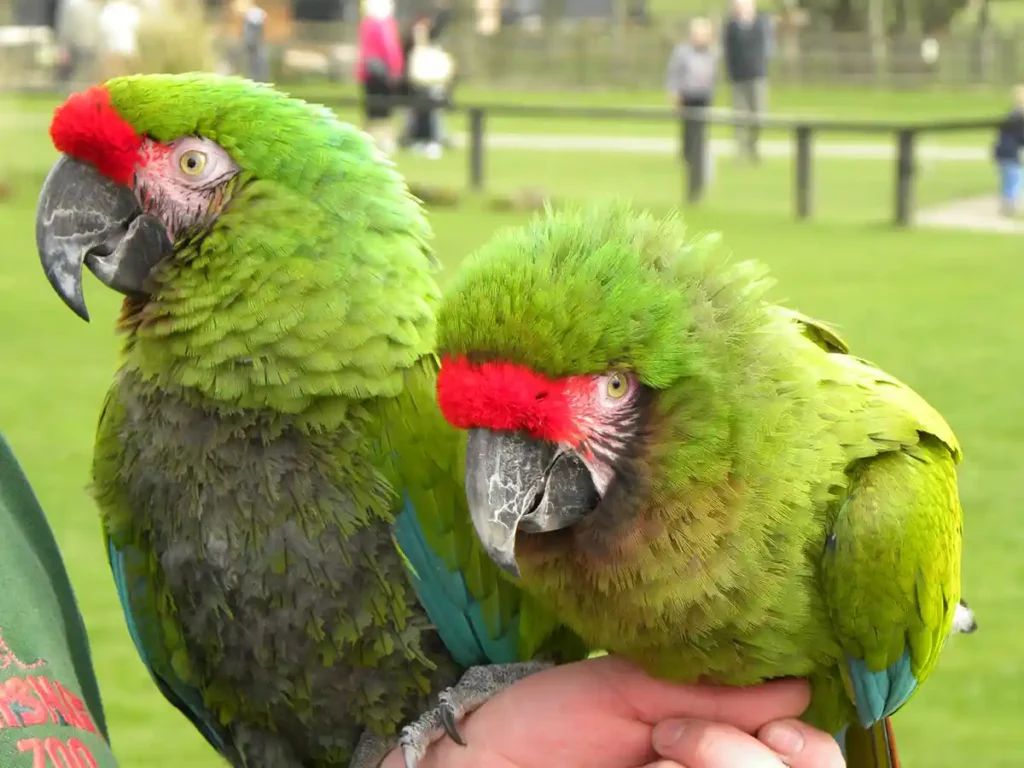
The IUCN Red List classifies the military macaw as “vulnerable” while the US Federal List categorizes it as “endangered”. The endangered status of these majestic birds is largely due to threats like habitat destruction and illegal pet trade activities across its range that may have caused their population numbers to decline between 3,000-10,000 individuals worldwide.
In order for conservation efforts geared towards saving this species from extinction to be successful, certain protective measures such as CITES Appendix I and Endangered Species must be taken. The Act must first be implemented in an effort to protect existing habitats where Macaws reside, ensuring they can live without being subjected to human exploitation or persecution by other animals.
Adopting or Purchasing a Military Macaw
If you’re thinking of having a military macaw as part of your family, it is suggested to source one from either an accredited breeder or adoption agency. Rescued birds are rare. More recommended than young ones in order to protect against the illegal pet trade and ensure they haven’t been taken away illegally from their wild habitats. The average cost for this kind of bird is around $2,500.
Prior to bringing home a military macaw, make sure that its physical condition reflects how well-cared for it has been. Look out for indications such as clean feathers, lively eyes and full crops which demonstrate signs of good healthiness and energy levels.
Summary
Military macaws, with their beautiful physical attributes and social behavior, as well as remarkable communication skills, are a truly incredible species of the natural world. To secure future generations being able to enjoy these captivating birds, we must be familiar with its particular necessities in habitat and care, while also identifying potential dangers for them. Thus providing us an interesting look into how marvellous the lives of these winged animals can be.
Frequently Asked Questions
Why is it called a military macaw?
The bird known as the “military macaw” has gained its name from its distinctive feathering, which looks like a military uniform. Its wide-ranging breeding season reflects this species’ adaptability to various weather conditions throughout their habitats. Hence why they have been given the name Ara militaris as their scientific name. This breed is able to adapt and thrive in many different climates, making them true survivors of nature!
Are military macaws endangered?
Military macaws, scientifically known as Ara militaris, are classified as Vulnerable by the IUCN. A rough population estimate of these majestic birds is somewhere between 3,000 to 10,000 individuals and it’s been marked endangered in Mexico since 1991, which implies that their numbers have not seen any growth over time. As a result of this dire situation, they’re considered an endangered species.
How much do military macaws sell for?
When considering a military macaw, it is important to know the current market trends. These birds can cost anywhere from $2,000-$3,500 depending on their individual traits. Owning one of these beautiful creatures often has a hefty price tag attached.
Research should be done thoroughly before investing in such an animal so that all facts are considered properly when making this significant decision. Macaws have become increasingly popular companions due to their intelligence and social abilities, leading to more individuals interested in bringing them into their home each year!
Where do military macaws live?
Military macaws can be found in subtropical and tropical areas stretching from Mexico all the way down to Argentina. The birds inhabit humid forests at lower elevations, as well as orchards, wooded hillsides, coffee farms and nearby agricultural fields. They have been spotted living near various types of vegetation across South America’s lush landscapes.
Are military macaws endangered?
The IUCN classifies the military macaw as vulnerable, indicating that its wild population is declining with estimates ranging from 3,000 to 10,000. Unfortunately, this species has not yet been officially listed as endangered. There are fears of extinction if swift action and preservation measures are not taken soon.
